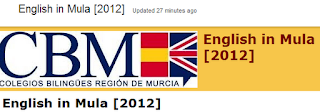We can describe things or people. If your teacher or your friend asks you to describe someone they are going to use some question like:
What is he like?
What is she like?
What are you like?
What am I like?
What are we like?
What are they like?
|
What was he like?
What was she like?
What were you like?
What was I like?
What were we like?
What were they like?
|
We have to answer using the adjectives we already know: young, old, brave, intelligent, beautiful, handsome, ugly, ..., but we can add more information like the height, the hair or the eyes.
They can also ask you "What is he wearing?". In this case, you have to describe the clothes, jewelry and other things someone is wearing (shirt, scarf, jeans, tracksuit, ...).
We'll use the present of verb to BE (am, are, is) to say what are they like NOW and the past of the same verb (was, were) to say what were they like BEFORE.
NOW
What is she like? She is young and beautiful. She has long, fair, wavy hair.
What is she wearing? She's wearing a black dress and two bracelets.
BEFORE
What was she like? She was young and beautiful. She had long, fair, wavy hair.
What was she wearing? She was wearing a black dress and two bracelets.
NOW
What is he like? He is _______________. He has __________________.
What is he wearing? He's wearing _______________________________.
BEFORE
What was he like? He was ______________. He had ________________.
What was he wearing? He was wearing ___________________________.
Sabemos describir cosas o gente. Si tu maestro o amigo te pide que describas a alguien, lo van a hacer usando preguntas como: What is he like? ...
Tenemos que responder usando los adjetivos que ya sabemos: "young, old, brave, intelligent, beautiful, handsome, ugly, strong"..., pero podemos añadir más información como la altura, el pelo o el color de los ojos.
También nos pueden preguntar "What is he wearing?" ["¿Qué ropa lleva puesta él?"]. En este caso, tienes que describir la ropa, joyas y otras cosas que lleve puestas ("shirt, scarf, jeans, tracksuit, ...").
Usaremos el presente del verbo to BE (am, are, is) para decir las cosas de ahora (NOW) y el pasado del verbo to BE (was, were) para cuando sean de antes (BEFORE).
SALVA, your English teacher












